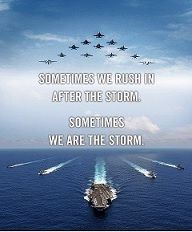Originally posted by zraver
View Post
But then the question becomes how useful are those F-35s flying off the Lxx class ships? They don't have ski jumps nor catapults. The F-35Bs will have to take off vertically. I don't think the short deck gives them enough room to build up lift in the wings to take off with increased load. These F-35Bs will have minimal load or minimal range. As such, they will have minimal use for the types of operation we conduct.



Comment